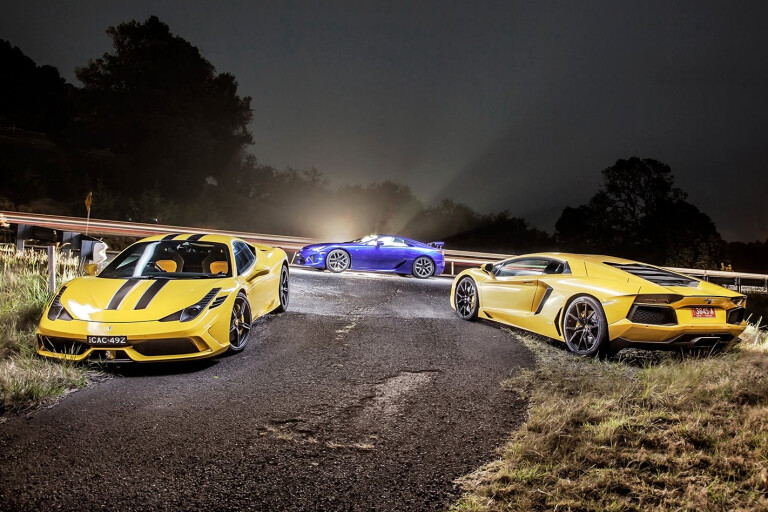
Breathe deeply, let your lungs drink. Assuming you’re reading this somewhere near sea level, your nostrils are flooding with 14.7psi of nitrogen marbled with blissful oxygen, 12 litres of it.
This is the stuff naturally-aspirated engines have survived on for decades. And, of course, in a world free of turbochargers, the only recipe for kilowatts is more compression ratio, more fuel, more revs.
Times, of course, are a changin’. Apparently we’re cooking ourselves on this little earth. The nitrogen and oxygen is getting elbowed by carbon dioxide. Cars are an easy target for regulatory greenies looking to reign in emissions. And naturally-aspirated engines are the weak zebras, an emissions-conscious car company’s easy target.
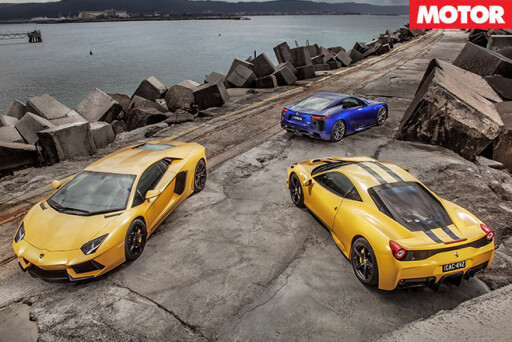 As the curtains silently but steadily draw on naturally-aspirated (NA) engines, we can either sob inwardly as we drive yet another turbocharged car with a lopped-off redline, a lazy, doughy throttle and an engine note so limp and lacklustre that fake noise needs to be played through the speakers. Or we can grab a few cracking NA cars still on sale today and give you some lotto goals.
As the curtains silently but steadily draw on naturally-aspirated (NA) engines, we can either sob inwardly as we drive yet another turbocharged car with a lopped-off redline, a lazy, doughy throttle and an engine note so limp and lacklustre that fake noise needs to be played through the speakers. Or we can grab a few cracking NA cars still on sale today and give you some lotto goals.
And they will be lotto goals because, unfortunately, right under our noses the affordable NA car is already gone. These days you need a wallet as thick as Clive Palmer to own a bewitching naturally-aspirated car. Even cars in the price range of M3 and RS4 are, of course, turbo or heading that way.
We must head into truly expensive territory to continue our NA worship, so we’ve grabbed three of the most spellbinding NA cars ever built. Representing V8s, the Ferrari 458 Speciale is, by way of specific output, the most powerful NA engine ever. Representing V10s, we have the howling, rollicking Lexus LFA. And for V12s, the Lamborghini Aventador, whose menacing exhaust note sounds a bit like an Italian tenor screaming into a didgeridoo.
 No naturally-aspirated four cylinder car still on sale merited inclusion. Toyota 86? Great chassis. Six cylinders? We wanted a 911 GT3 but at the time of testing, Porsche was still fitting extra fire extinguishers. And in this company, a base Carrera would stick out like a kazoo in a violin partita.
No naturally-aspirated four cylinder car still on sale merited inclusion. Toyota 86? Great chassis. Six cylinders? We wanted a 911 GT3 but at the time of testing, Porsche was still fitting extra fire extinguishers. And in this company, a base Carrera would stick out like a kazoo in a violin partita.
We took our supercar trio north from Sydney to Putty Road for one unbelievable day. Stopping short of requesting an agreement signed in blood, Ferrari lent us the Speciale on condition this wasn’t a comparison. Rather, it’s a celebration. Three NA supercars, two with trembling 9000rpm redlines. Let’s go.
BEST OF NA: V8 | FERRARI 458 SPECIALE
Both engine and car are one of Maranello’s best ever
Associate editor Newman tumbles out of the Speciale looking like he’s just won lotto and got Scarlett Johansson’s phone number in the last 15 minutes. He says nothing, just laughs. “It’s the best car I’ve ever driven,” he finally stutters. I know, I say – I was similarly speechless and fawning not 30 minutes earlier.
 Dare dispute it, but for nearly 70 years Ferrari has made the world’s best naturally-aspirated engines. Only recently, as emission regulations tighten, Ferrari has reluctantly turned back to turbos. Last year an anonymous Ferrari executive confessed to US mag Car and Driver, “we don’t like the turbo. But it’s the right way to reduce emissions without sacrificing performance.”
Dare dispute it, but for nearly 70 years Ferrari has made the world’s best naturally-aspirated engines. Only recently, as emission regulations tighten, Ferrari has reluctantly turned back to turbos. Last year an anonymous Ferrari executive confessed to US mag Car and Driver, “we don’t like the turbo. But it’s the right way to reduce emissions without sacrificing performance.”
When the California T arrived last year it had been 27 years since the last turbo Ferrari. This year, Ferrari will insert turbos between the 458’s airboxes and throttle bodies, quietly ending a dynasty of small, NA mid-engine sports cars spanning back to the 1970s – and making the naturally-aspirated Speciale the last of its breed. It’s why it’s here.
Looking like a bright yellow shoe, the Speciale is low and heavy to the earth; like it’s just driven off some kid’s wall. You tumble into the thinly-padded seat, the low roof having contorted you into a hunch.
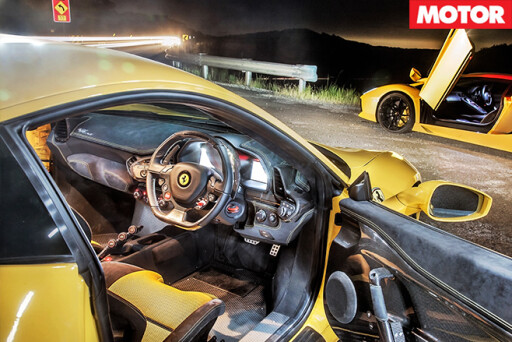 Inky carbonfibre is everywhere, interrupted by yellow stitching and Alcantara. Underfoot, the floor is naked metal. It all helps save 90kg over the regular 458, weight now 1320kg. Visibility is generous through the big windscreen and you can’t help but laugh excitedly as you spot the giant yellow tacho with a “10” on it.
Inky carbonfibre is everywhere, interrupted by yellow stitching and Alcantara. Underfoot, the floor is naked metal. It all helps save 90kg over the regular 458, weight now 1320kg. Visibility is generous through the big windscreen and you can’t help but laugh excitedly as you spot the giant yellow tacho with a “10” on it.
Having thumbed the Speciale’s steering wheel starter button, a rev solicits an angry blip like there’s no flywheel. The noise is rich, distinctive and angry. And loud. Very loud. First arrives with a pull of the ‘up’ paddle, electric handbrake off, the automatic clutch engages with a jerk. Assuming the Speciale is warm, the bitumen dry, the road empty – and, err, closed – boot it.
2000rpm, full throttle. The kick is instant – none of this waiting around for turbos to spool up. As the 4.5-litre V8 summons its 445kW, the rear 305-section Pilot Super Sport Cups wriggle in wheelspin, but are neatly contained by the traction control. Torque is impressive this low in the revs.
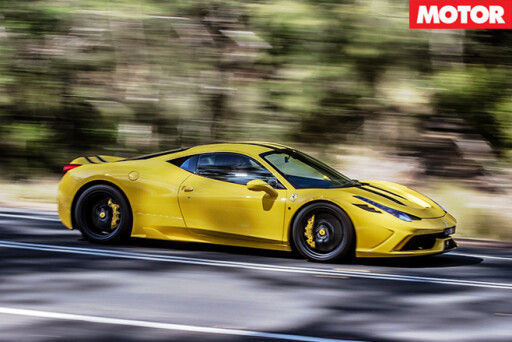 4000rpm. Throttle against metal, traction increasing, thrust now fairly serious, your back compressed against those thinly padded seats, eyes drinking up a lot of road. 6000rpm. The noise: a high-tempo, rich roar growing in volume, pitch and anger. The Speciale squats harder. You’re at peak torque now, 540Nm.
4000rpm. Throttle against metal, traction increasing, thrust now fairly serious, your back compressed against those thinly padded seats, eyes drinking up a lot of road. 6000rpm. The noise: a high-tempo, rich roar growing in volume, pitch and anger. The Speciale squats harder. You’re at peak torque now, 540Nm.
7500rpm. Engine roaring, vibration not insignificant, acceleration simply brutal. Brain squealing to pluck ‘up’ paddle. 8500rpm. Feels like the thing is going to explode. 9000rpm. LEDs atop the steering wheel beckon you to pull the tall, thin, carbon paddle.
There’s so much volume, pitch and intensity. All at once, you wince at the revs, yet at the same time it feels like it could wind on another 1000rpm. It’s at 9000rpm the Speciale is cranking its full 445kW and feels unbelievably alive.
 At this point your eyes are as big as an owl’s and your heart feels like it’s doing 200bpm. Pluck second without lifting. And repeat. With launch control, you’ve hit 100km/h in a claimed 3.0 seconds, 200km/h takes 9.1 seconds and, Ferrari claims, reaching the quarter takes just 10.7 seconds.
At this point your eyes are as big as an owl’s and your heart feels like it’s doing 200bpm. Pluck second without lifting. And repeat. With launch control, you’ve hit 100km/h in a claimed 3.0 seconds, 200km/h takes 9.1 seconds and, Ferrari claims, reaching the quarter takes just 10.7 seconds.
If there’s one thing we’ll miss about naturally-aspirated engines, it’s the intensity at redline. The 458 Speciale uses a flat-plane crank V8, 4497cc and Ferrari’s most powerful NA V8. Also, for specific output, it’s the most powerful NA engine ever made.
Its 99kW/litre eclipses, for comparison’s sake, the 991 911 GT3’s 92kW/litre. And with 350kW from 3.8 litres, that thing’s not messing about. So it’s worth pausing to appreciate the Speciale’s 445kW from 4.5 litres, without a blower or turbo in sight.
 A 14:1 compression ratio and 9000rpm redline sure helps. Over the 458 the Speciale scores more aggro cams, revised pistons and conrods, optimised crank geometry and a new, carbonfibre intake system (which alone helps shave 8kg).
A 14:1 compression ratio and 9000rpm redline sure helps. Over the 458 the Speciale scores more aggro cams, revised pistons and conrods, optimised crank geometry and a new, carbonfibre intake system (which alone helps shave 8kg).
Of course, Ferrari’s engineers didn’t knock off when they’d finished with the Speciale’s engine. The Speciale is so easy and friendly to drive fast – and lord is it fast. When driven hard, other performance cars can take an eternity to reveal their frequency, into which, as a driver, you tune, all the while your confidence withers. Others, at eight tenths, fall apart around their dynamic edges. But it’s at this point the Speciale is only getting started.
You don’t sit in the Speciale so much as splice your brain into its wiring loom – there’s so much feedback coming to you, through the seat, the wheel, the pedals. A super-fast steering rack, which initially takes some getting used to, means you never have to move your hands from nine and three.
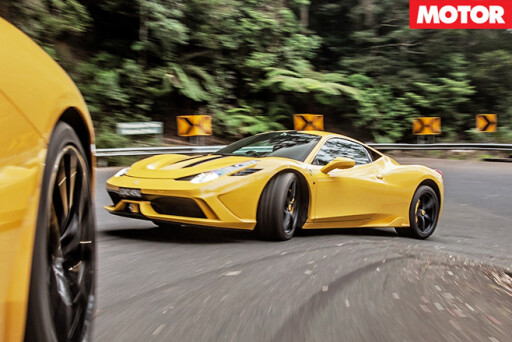 Despite feeling hyper alert, the Speciale is unbothered by aggressive steering inputs, sitting flat and unfussed. The feel is only just sufficient to notice a loaded-up, front 245-section Michelin grinding over bitumen, but the weighting is spot on.
Despite feeling hyper alert, the Speciale is unbothered by aggressive steering inputs, sitting flat and unfussed. The feel is only just sufficient to notice a loaded-up, front 245-section Michelin grinding over bitumen, but the weighting is spot on.
The brake pedal is almighty, clamping six-pot front and rear calipers into 398mm front carbon discs, 360mm rear. The pedal feels sensitive to the tiniest of pressure differences. And, of course, with unbelievable stopping power, a big stop in the Speciale is hugely satisfying and not at all frightening, such is its stability.
At high speed, big bumps merely rock the Speciale gently from side to side, while smaller, high-tempo bumps are worked impressively. The suspension performance is incredible. In fact, the Speciale can produce 1.33 cornering g.
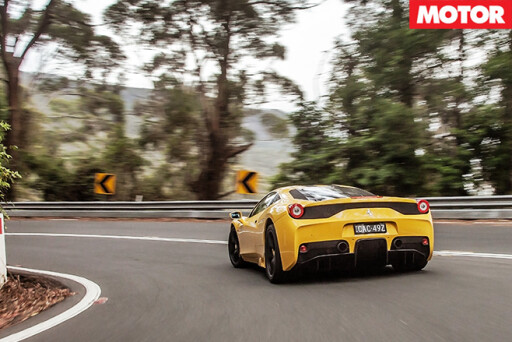 The Enzo could manage 1.1g, which makes sense, given the Speciale is an incredible 1.4 seconds faster than an Enzo around Fiorano. The seven-speed dual clutch transmission, too, is crisp, alert and alive. Down changes are swift, accompanied by an angry, loud, crisp throttle blip.
The Enzo could manage 1.1g, which makes sense, given the Speciale is an incredible 1.4 seconds faster than an Enzo around Fiorano. The seven-speed dual clutch transmission, too, is crisp, alert and alive. Down changes are swift, accompanied by an angry, loud, crisp throttle blip.
After a big stop, you can tip the Speciale in with only small steering input, given that crazy-fast rack – you’re free to attack apex with incredible entry speed thanks to those sticky Michelins. Stability on corner entry is excellent. On corner exit the Speciale wants to dance.
There’s incredible traction from the rear 305s but squeeze the gas a little harder and the Speciale’s bum will gently step, rather than snap, sideways, inviting more throttle, and more angle. It’ll have you cackling like a kid on red cordial.
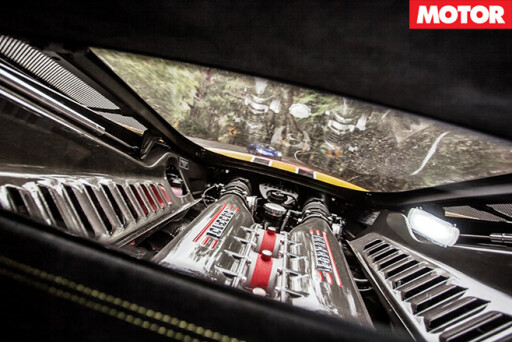 Thanks to a hyper alert, sensitive throttle (still foreign to turbo cars) there’s a friendly, predictable relationship between throttle input and slide angle. At least, so it seems: if you’ve got the manettino in “CT OFF” the Speciale is helping make you look like a hero.
Thanks to a hyper alert, sensitive throttle (still foreign to turbo cars) there’s a friendly, predictable relationship between throttle input and slide angle. At least, so it seems: if you’ve got the manettino in “CT OFF” the Speciale is helping make you look like a hero.
Welcome to something called Slide Slip Control, an ECU program that senses available grip, quietly takes over the throttle and locks and unlocks the diff to maintain a slide based on your steering input. You will feel like a drifting god but, sadly, it’s the car. It might be cheating but a grin is a grin.
It’s just one of the ways the Speciale flatters you. It has huge grip yet it’ll encourage you up to the limits, where the grip falls off a slope, not a cliff, doing good things for your bravado. But, as ever, the seamless electronics are there to catch you if you that corner tightens.
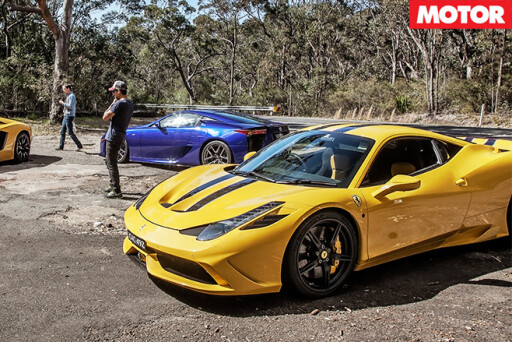 Unfortunately, though it sounds it, the Speciale isn’t perfect. For some, the exhaust is just a blare of noise rather than music. On our good ol’ Aussie coarse chip bitumen, there’s road noise like you’re in a jumbo at cruising altitude. The ride can let in a few too many bumps. And you might finally go nuts if you had to drive it long distance.
Unfortunately, though it sounds it, the Speciale isn’t perfect. For some, the exhaust is just a blare of noise rather than music. On our good ol’ Aussie coarse chip bitumen, there’s road noise like you’re in a jumbo at cruising altitude. The ride can let in a few too many bumps. And you might finally go nuts if you had to drive it long distance.
They’re fair criticisms to level against a $550,000 car. But then again, after 30 minutes in the Speciale, you won’t notice, nor care. The Speciale is as close to driving perfection I’ve ever come and will surely be remembered as one of Maranello’s greatest road cars.
BEST OF NA: V10 | LEXUS LFA
This automotive banshee took 10 years to perfect – it was time well spent
Each Lexus LFA buyer, a global total of just 500, received with their car a special book detailing the incredible decade-long development process. The first sentence of the book reads: “In the beginning is the engine.” There is so much to enjoy and discuss in the LFA, but every experience is dominated by the bespoke 4.8-litre V10 nestled front-midships.
 Numbers fail to do it justice. In this day and age, 412kW/480Nm are impressive, but not spectacular, though a 9000rpm redline still raises eyebrows. However, in terms of connection and the ability to illicit an emotional response, only the Speciale’s V8 comes close to the LFA’s 1LR-GUE – nothing has yet surpassed it.
Numbers fail to do it justice. In this day and age, 412kW/480Nm are impressive, but not spectacular, though a 9000rpm redline still raises eyebrows. However, in terms of connection and the ability to illicit an emotional response, only the Speciale’s V8 comes close to the LFA’s 1LR-GUE – nothing has yet surpassed it.
It fires with a neighbourhood-waking flare of revs and settles to a buzzing idle. Once warm, cylinder de-activation often means just five cylinders fire in a futile attempt to save fuel. The car is not particularly happy at low speeds; the engine is perfectly tractable, but the single-clutch transaxle feels clumsy.
If there’s one item that dates the LFA, it’s the gearbox, not helped by it only using odd-numbered gears in auto mode. Best to flick it to Sport and use the gorgeous, cold-to-the-touch magnesium-alloy paddles.
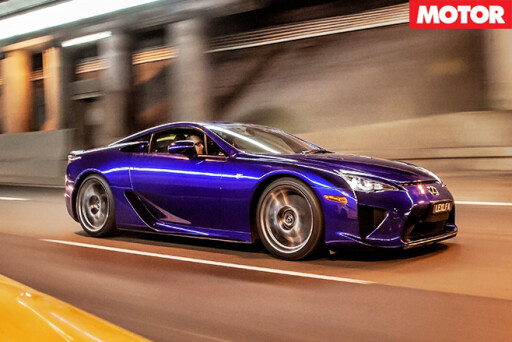 In contrast to Lexus’s anaesthetised traditional product (eg, SC430, ES300) the LFA feels hyperactively alert. The ride is very firm and ruthlessly controlled, the nose constantly darting and fidgeting over bumps and road cambers. This is not a car in which you make relaxing progress; every input is met with an immediate reaction, but nothing responds as instantly as the throttle pedal.
In contrast to Lexus’s anaesthetised traditional product (eg, SC430, ES300) the LFA feels hyperactively alert. The ride is very firm and ruthlessly controlled, the nose constantly darting and fidgeting over bumps and road cambers. This is not a car in which you make relaxing progress; every input is met with an immediate reaction, but nothing responds as instantly as the throttle pedal.
Lexus went to incredible lengths to ensure the LFA’s V10 possessed unheard of levels of response, including ultra-lightweight internals, 10 individual throttle bodies and ‘response prioritised control logic’, which estimates the volume of intake air based on the throttle position to ensure the correct level of fuel is injected instantaneously. If the driver possessed the required skill, it feels as if he or she could meter out the power in 0.5 per cent increments.
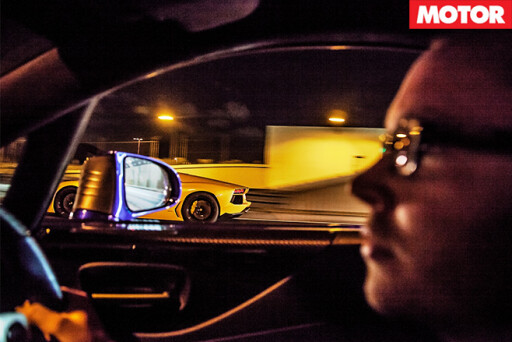 With Sydney’s sprawl behind us, it’s time to floor the throttle for the first time. Such is the volume and intensity of noise that erupts, it feels natural to pull the upshift paddle, only to discover a mere 5000rpm was used – just over half the LFA’s vocal range.
With Sydney’s sprawl behind us, it’s time to floor the throttle for the first time. Such is the volume and intensity of noise that erupts, it feels natural to pull the upshift paddle, only to discover a mere 5000rpm was used – just over half the LFA’s vocal range.
Pick a gear – any gear, but third is good – sink your foot to the carpet and you enjoy a gradual crescendo, the engine note changing timbre as the rpm rises. This mechanical shriek is no accident, but the result of months of work by Lexus engineers, who reportedly listened to Formula 1 CDs and DVDs on loop in an attempt to capture a similar sound. They succeeded admirably.
Windows down, extending the V10 through overhanging trees or past rock faces is as close as you can get to an automotive religious experience without driving through Vatican City. With the noise at its zenith, it envelopes you like an invisible, audible fog.
 It’s fast, too. While it lacks the brutal violence of the Aventador’s V12, the LFA is still prodigiously rapid, the rate of acceleration increasing in concert with revs in a way only naturally-aspirated cars can manage. The LFA’s preternatural responses are somewhat a double-edged sword, though.
It’s fast, too. While it lacks the brutal violence of the Aventador’s V12, the LFA is still prodigiously rapid, the rate of acceleration increasing in concert with revs in a way only naturally-aspirated cars can manage. The LFA’s preternatural responses are somewhat a double-edged sword, though.
It responds instantly to driver input, both good and bad. Make a mistake and it’s not interested in flattering your abilities; too much throttle and it skips sideways sharply, and a firm hand is needed on the steering as the nose sniffs out road imperfections like an overzealous beagle.
Up to around eight-tenths the LFA is in no way demanding to drive, but nearer its limit it starts to feel edgy and focuses your attention. This is likely due to the car’s extremely low ‘moment of inertia’, ie, the amount of force needed to make the vehicle change its rate of rotation.
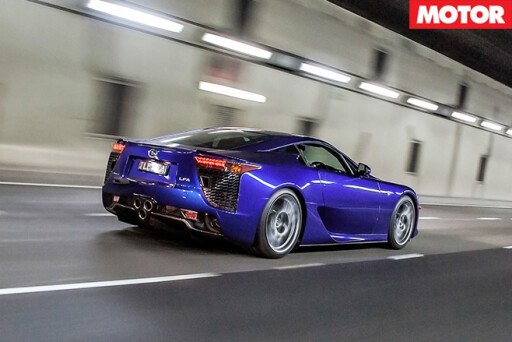 This explains why the LFA feels so agile and darty, but theoretically means it’s very easy to catch and correct the car once it has started to slide. Perhaps on a track it would powerslide all day, but with an insured value of $1million, the public road isn’t the place to find out.
This explains why the LFA feels so agile and darty, but theoretically means it’s very easy to catch and correct the car once it has started to slide. Perhaps on a track it would powerslide all day, but with an insured value of $1million, the public road isn’t the place to find out.
Key to the LFA’s handling balance is its compact layout. To achieve such a low moment of inertia, engineers needed to ensure as much weight as possible was concentrated towards the car’s centre. This explains why the V10 sits deep behind the front axle line.
The engine itself is a marvel, smaller in every dimension than Toyota’s 3.5-litre V6, yet the car’s compact dimensions – it’s no bigger than a 911 – created plenty of engineering headaches and the need for some novel solutions.
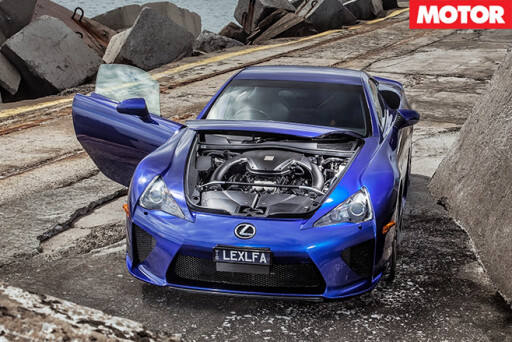 To view a naked LFA, devoid of panels, is to witness a packaging miracle. For instance, moving the driver and passenger as close as possible to the centre of the car left insufficient space for the exhaust system and propshaft to sit side-by-side.
To view a naked LFA, devoid of panels, is to witness a packaging miracle. For instance, moving the driver and passenger as close as possible to the centre of the car left insufficient space for the exhaust system and propshaft to sit side-by-side.
The latter is therefore stacked vertically above the former, driven by a counter gear rather than directly from the crankshaft, which allows the dry-sumped V10 to sit lower still.
With no room in the front, the radiators sit in the rear of the car. This creates a unique piece of supercar theatre, with following drivers able to see one or both of the radiator fans spin into life as the LFA drives along.
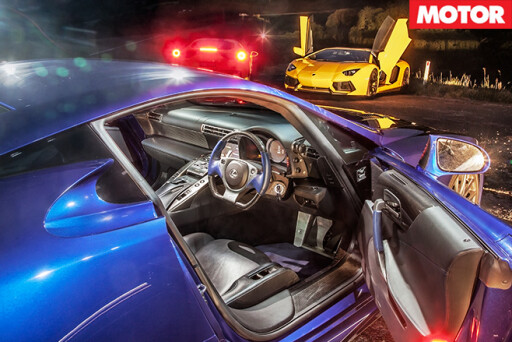 The windscreen washer bottle is located behind the left-hand door and space constraints forced the adoption of electric power steering; there was simply no room for an hydraulic system.
The windscreen washer bottle is located behind the left-hand door and space constraints forced the adoption of electric power steering; there was simply no room for an hydraulic system.
There’s plenty to geek out on, but what sets the LFA apart is the way it feels to drive. It is so finely honed. The steering, for instance: while some manufacturers, even high-end ones, still struggle to provide a decent electrically-assisted setup, the LFA’s steering is perfect – there is no other word for it.
Its speed and weighting are sublime and it’s full of the sort of textural feedback that supposedly isn’t possible without a conventional hydraulic setup. The brakes, too, are the best I’ve ever experienced on a road car, with none of the inconsistent feel or dead spots that plague some other manufacturer’s composite systems. Yes, Lexus engineers took 10 years to get it right, but they absolutely delivered.
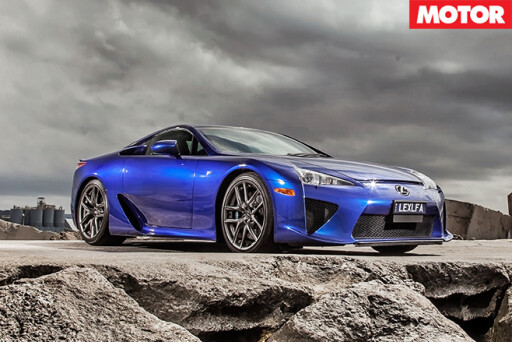 While it lacks the headline numbers, in its own way, the LFA is every bit as special as the Veyron. Both are low-volume, exquisitely crafted supercars built purely to show what each manufacturer could accomplish with a limitless development budget. But whereas VW, through Bugatti, chose to chase record top speeds, Lexus set out to develop the perfect driver’s car.
While it lacks the headline numbers, in its own way, the LFA is every bit as special as the Veyron. Both are low-volume, exquisitely crafted supercars built purely to show what each manufacturer could accomplish with a limitless development budget. But whereas VW, through Bugatti, chose to chase record top speeds, Lexus set out to develop the perfect driver’s car.
It’s undeniably Japanese, but that’s no criticism; whereas Italian supercars are infused with Latin passion, the LFA is imbued with a samurai’s honour. More than any car in recent memory, it’s a work of art, a finely wrought piece of automotive sculpture.
The LFA is a credit to chief engineer Haruhiko Tanahashi, who early on “decided to make the LFA exactly as I envisioned it…things that truly move people emotionally are not created through group consensus.” Tanahashi-san, we salute you.
BEST OF NA: V12 | LAMBORGHINI AVENTADOR
This raging bull is all about pure, unadulterated power
Other manufacturers have strong 12-cylinder heritages, but none have been as committed to the cause as Lamborghini. It’s dabbled in V8s over the years, and the Gallardo and new Huracán show there’s nothing wrong with a V10 Lambo, either, but all of Sant’Agata’s headline offerings have been powered by a V12 – Miura, Countach, Diablo, Murcielago, and now the Aventador.
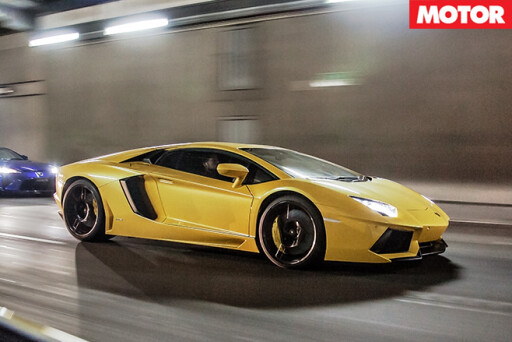 Incredibly, derivations of the same engine powered Lamborghinis for almost 50 years. Famed Italian engineer Giotto Bizzarrini, the man behind the Ferrari 250 GTO, was tasked with building Ferruccio Lamborghini an engine to power his new car. Bizzarrini created a short-stroke, quad-cam 3.5-litre V12 that gave Lamborghini technical superiority, at least, over Ferrari’s equivalent units.
Incredibly, derivations of the same engine powered Lamborghinis for almost 50 years. Famed Italian engineer Giotto Bizzarrini, the man behind the Ferrari 250 GTO, was tasked with building Ferruccio Lamborghini an engine to power his new car. Bizzarrini created a short-stroke, quad-cam 3.5-litre V12 that gave Lamborghini technical superiority, at least, over Ferrari’s equivalent units.
The story famously goes that Bizzarrini was to be paid by the horsepower, so his prototype produced 370bhp at a staggering 9000rpm, with Giotto adamant with a better fuel system it would hit 400bhp at 11,000rpm. How long it would last was another matter, and the 350GT debuted with a still-impressive 280bhp (209kW) in 1963.
Over the next four-and-a-half decades, Bizzarrini’s V12 would slowly increase in size; first to 3.9 litres for the Miura, then from 4.0 to 5.2 litres over the Countach’s 16-year lifespan. During that time four valves per cylinder arrived with the 5000QV in 1985, with fuel injection introduced at the same time on US-spec cars.
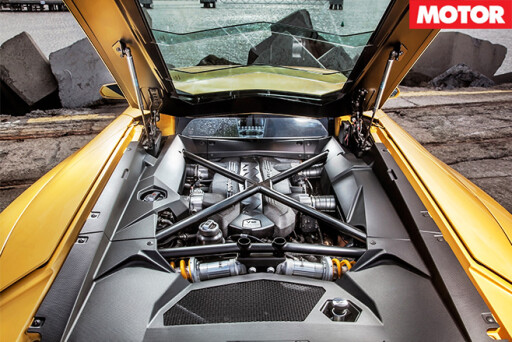 By the time the Diablo ushered out of production in 2001, Bizzarrini’s V12 had now developed from 3.5 litres and 209kW to 6.0 litres and 429kW. It would soldier on, however, its swansong fittingly coming in the back of the 2010 Murcielago LP670 SV, stretched to an incredible 6.5 litres and 493kW. Nothing is able to last forever, though, and the arrival of the Aventador in 2011 called for an all new heart.
By the time the Diablo ushered out of production in 2001, Bizzarrini’s V12 had now developed from 3.5 litres and 209kW to 6.0 litres and 429kW. It would soldier on, however, its swansong fittingly coming in the back of the 2010 Murcielago LP670 SV, stretched to an incredible 6.5 litres and 493kW. Nothing is able to last forever, though, and the arrival of the Aventador in 2011 called for an all new heart.
Dubbed L539, Lamborghini’s new V12 retains a 6.5-litre capacity, but is smaller, lighter, yet more powerful than the final Bizzarrini engine with 515kW/690Nm. And remember, this engine will have plenty of headroom built in for future models – 600kW Lambo anyone?
Its open-deck crankcase is built from aluminium-silicon alloy while the incredibly undersquare bore/stroke ratio (95mm vs 76.4mm) means it revs to the heavens, peak power being produced at an incredible 8250rpm.
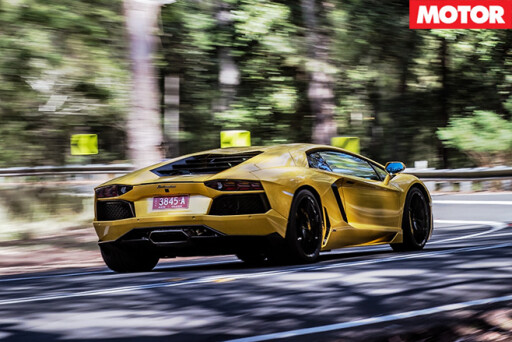 With so much power, and weighing only 1575kg (dry weight), the Aventador’s acceleration is shocking in its violence. And then you discover you’ve been short-shifting at 7000rpm and only using 70 per cent of the throttle. The way the tacho lunges through the last 1500rpm firmly establishes the big Lambo as one of the very fastest cars in the world.
With so much power, and weighing only 1575kg (dry weight), the Aventador’s acceleration is shocking in its violence. And then you discover you’ve been short-shifting at 7000rpm and only using 70 per cent of the throttle. The way the tacho lunges through the last 1500rpm firmly establishes the big Lambo as one of the very fastest cars in the world.
All this is accompanied by a V12 bellow, though it’s not hard to hear why so many owners fit straight-through exhausts, as this engine deserves bigger lungs. Corners arrive at a fearsome rate, requiring every bit of muscle the enormous composite brakes can muster to pull the car up in time, at which point the rear end starts to wander as all that engine mounted behind your head makes its presence felt.
With a modern dual-clutch ’box the Aventador would be unstoppable, but sadly the single-clutch ISR robotised manual is heavily compromised. While lighter and more compact, for shift quality and smoothness it feels a generation behind.
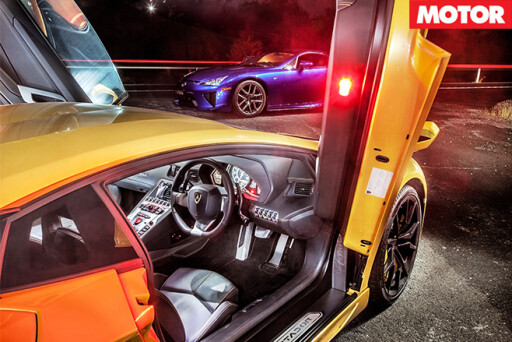 In flat-out Corsa mode the shifts are wincingly brutal – Lamborghini calls this engineered-in thump ‘emotional’, which must be a synonym for painful in Italian. Cruising about in Auto works okay, but every now and then will it gets confused sending a massive shock through the car.
In flat-out Corsa mode the shifts are wincingly brutal – Lamborghini calls this engineered-in thump ‘emotional’, which must be a synonym for painful in Italian. Cruising about in Auto works okay, but every now and then will it gets confused sending a massive shock through the car.
The low-speed ride is also particularly unyielding, meaning commuting in an Aventador isn’t likely to be the most pleasant experience, especially with such weighty steering (no doubt any Countach or Diablo owners just scoffed incredulously), not to mention its more than two-metre width. What is surprising, though, is what a great GT car the Lambo becomes once speeds rise – the steering lightens, the ride improves and the whole car seems to relax.
At 110km/h it feels like it’s barely interested, which, of course, it isn’t. It’s built to dispatch massive distances at two or three times that speed, though exercise the performance and the 90-litre fuel tank drains with alarming haste.
 When the corners arrive there is astounding grip and total traction from the all-wheel drive system, though aware that customers’ driving skills might not be commensurate with their bank balances, it’s heavily restrained by the ESP system, stuttering out of corners like its shoelaces are tied together.
When the corners arrive there is astounding grip and total traction from the all-wheel drive system, though aware that customers’ driving skills might not be commensurate with their bank balances, it’s heavily restrained by the ESP system, stuttering out of corners like its shoelaces are tied together.
It’s takes a deep breath to disable the ESP system in something this big, fast and expensive, but do so and it’s a car transformed. With no electronic shackles, it picks up cleanly out of corners with such ferocious pace it leaves you breathless.
The Aventador is not a car you would ever provoke out of shape on the public road, but even at a slightly reduced pace, you’re still going faster than pretty much anything else around anyway.
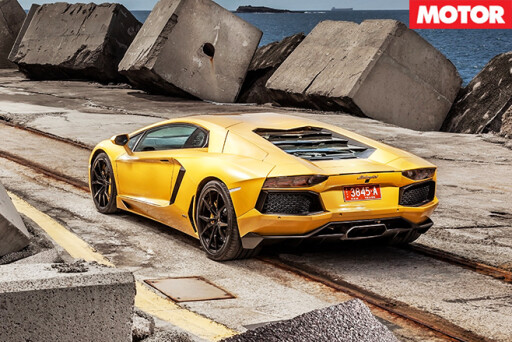 If ever there was a car where how it drives is completely beside the point, then the Aventador is it. It looks a million bucks, which makes its $761,500 sticker price (before options) a relative bargain. Nothing attracts attention like a V12 Lamborghini; it is the ultimate rock star car.
If ever there was a car where how it drives is completely beside the point, then the Aventador is it. It looks a million bucks, which makes its $761,500 sticker price (before options) a relative bargain. Nothing attracts attention like a V12 Lamborghini; it is the ultimate rock star car.
With Lambo boss Stephen Winkelmann’s noted distaste of hybrids, let alone turbos, it’s the good folk from Sant’Agata who are most likely to keep the naturally-aspirated flag flying in years to come.
THREE INCREDIBLE CARS
Three incredible cars, the likes of which, sadly, we’re unlikely to ever see again. The 458 Speciale is Ferrari at the absolute peak of its powers; we would not be at all surprised if it joins the Daytona, F40 et al as a marker in the company’s illustrious history of what it could achieve at its best. If nothing else, it’s a fitting end to the Montezemolo era.
 The 458’s turbocharged successor, due later this year, will undoubtedly be faster and more capable, as absurd as that seems having driven the Speciale. But we’d bet the house it won’t be as intimately connected. We hope we’re wrong, we hope the new 458 is like the Speciale turned up to 11. Lord knows, on current form, if anyone can achieve the impossible with turbos, it’s Ferrari.
The 458’s turbocharged successor, due later this year, will undoubtedly be faster and more capable, as absurd as that seems having driven the Speciale. But we’d bet the house it won’t be as intimately connected. We hope we’re wrong, we hope the new 458 is like the Speciale turned up to 11. Lord knows, on current form, if anyone can achieve the impossible with turbos, it’s Ferrari.
What’s certain is that we’ll never see another car like the LFA. You’re more likely to see Great Wall on the F1 grid in 2017 than a major car manufacturer sink 10 years and hundreds of millions of dollars into what is essentially an engineer’s wet dream.
That Toyota was the one to build it only makes it more remarkable. It’s the ultimate advertisement for what makes natural aspiration great. The noise, the response, the feeling, the ability to play the engine as you would a musical instrument.
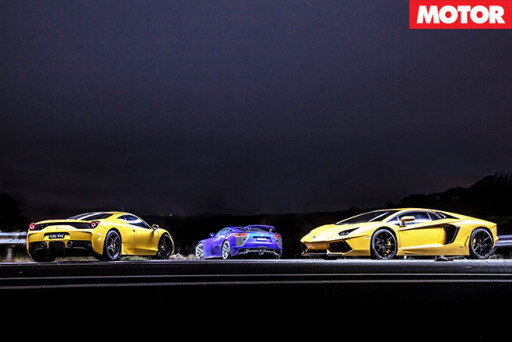 Should you be lucky enough to drive an LFA 10, 20, 30 years from now, it will feel just as special as it does today. Not because it’s perfect, but because, like all cars revered as classics today, it perfectly encapsulates a particular time in history.
Should you be lucky enough to drive an LFA 10, 20, 30 years from now, it will feel just as special as it does today. Not because it’s perfect, but because, like all cars revered as classics today, it perfectly encapsulates a particular time in history.
Which leaves us with the Aventador. Thankfully, it’s likely to be with us a while yet. Big Lambos typically have a shelf life of around 10 years, so we should be enjoying 12 atmosphere-gulping cylinders, with ever more impressive power figures, until 2020.
Even better, mention turbocharging to a Lambo powertrain engineer and they practically break down in tears at the thought of sullying their magnificent creations with such a device. Whether they can overcome ever stricter emissions and noise regulations remains to be seen, but they’ll have our support every step of the way.
| FERRARI 458 SPECIALE | LEXUS LFA | LAMBORGHINI AVENTADOR | |
| Body | 2-door, 2-seat coupe | 2-door, 2-seat coupe | 2-door, 2-seat coupe |
| Drive | rear-wheel | rear-wheel | all-wheel |
| Engine | 4497cc V8, DOHC, 32v | 4805cc V10, DOHC, 40v | 6490cc V12, DOHC, 48v |
| Bore/Stroke | 94.0 x 81.0mm | 88.0 x 79.0mm | 95.0 x 76.4mm |
| Compression | 14.0:1 | 12.0:1 | 11.8:1 |
| Power | 445kW @ 9000rpm | 412kW @ 8700rpm | 515kW @ 8250rpm |
| Torque | 540Nm @ 6000rpm | 480Nm @ 7000rpm | 690Nm @ 5500rpm |
| Power/weight | 345kW/tonne | 278kW/tonne | 327kW/tonne |
| CO2 Emissions | 275g/km | N/A | N/A |
| 0-100km/h | 3.0sec (claimed) | 3.7sec (claimed) | 2.9sec (claimed) |
| Top Speed | 325km/h (claimed) | 325km/h (claimed) | 350km/h (claimed) |
| Transmission | 7-speed dual-clutch | 6-speed automated manual | 7-speed automated manual |
| Weight | 1290kg (dry) | 1480kg (kerb) | 1575kg (dry) |
| Suspension | double A-arms, adaptive dampers, anti-roll bar (f); multi-links, adaptive dampers, anti-roll bar (r) | double A-arms, coil springs, anti-roll bar (f); multi-links, coil springs, anti-roll bar (r) | double A-arms, inboard push-rod coil-overs, anti-roll bar (f/r) |
| L/W/H | 4571/1951/1203mm | 4505/1895/1220mm | 4780/2030/1136mm |
| Wheelbase | 2650mm | 2605mm | 2700mm |
| Tracks | 1679/1632mm | 1580/1570mm (f/r) | 1720/1700mm (f/r) |
| Steering | electrically assisted rack-and-pinion | electrically-assisted rack-and-pinion | hydraulically-assisted rack-and-pinion |
| Brakes | 398mm ventilated carbon discs, 6-piston calipers (f); 360mm ventilated carbon discs, 6-piston calipers (r) | 390mm two-piece carbon ceramic rotors, 6-piston calipers (f); 350mm two-piece carbon ceramic rotors, 4-piston calipers (r) | 400mm carbon ceramic rotors, 6-piston calipers (f); 380mm carbon ceramic rotors, 4-piston calipers (r) |
| Wheels | 20 x 9.0-inch (f); 20 x 11.0-inch (r) | 20 x 9.5-inch (f); 20 x 11.5-inch (r) | 19 x 9.0-inch (f); 20 x 12.0-inch (r) |
| Tyres | 245/35 R20 (f); 305/30 R20 (r) Michelin Pilot Sport Cup 2 | 265/35 R20 95Y (f); 305/30 R20 99Y (r) Bridgestone RE070 | 255/35 ZR19 (f); 335/30 ZR20 (r) Pirelli P Zero |
| Price | $550000 | $700,000 (in 2012) | $761500 |
| Positives | Almost impossible to fault as a driving experience | Orgasmic engine; feedback; telepathic responses | Supermodel looks; goliath V12; sense of occasion |
| Negatives | Could be too hardcore for some; we didn’t get to keep it | Extremely focused; can be a handful at the limit; outdated gearbox | Low-speed ride; difficult gearbox; size issues; thirst |
| 5 out of 5 stars | 4.5 out of 5 stars | 4 out of 5 stars |

COMMENTS